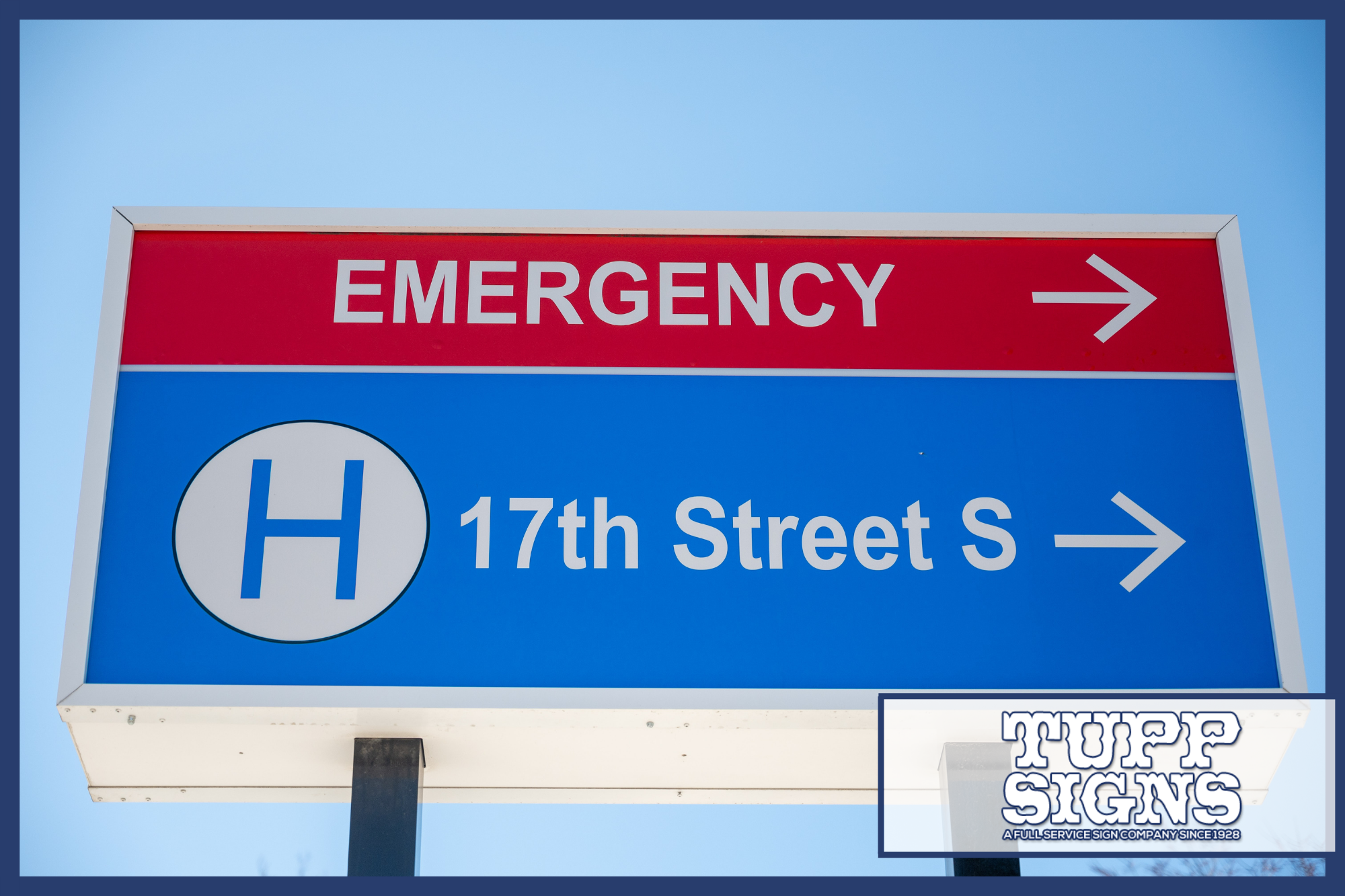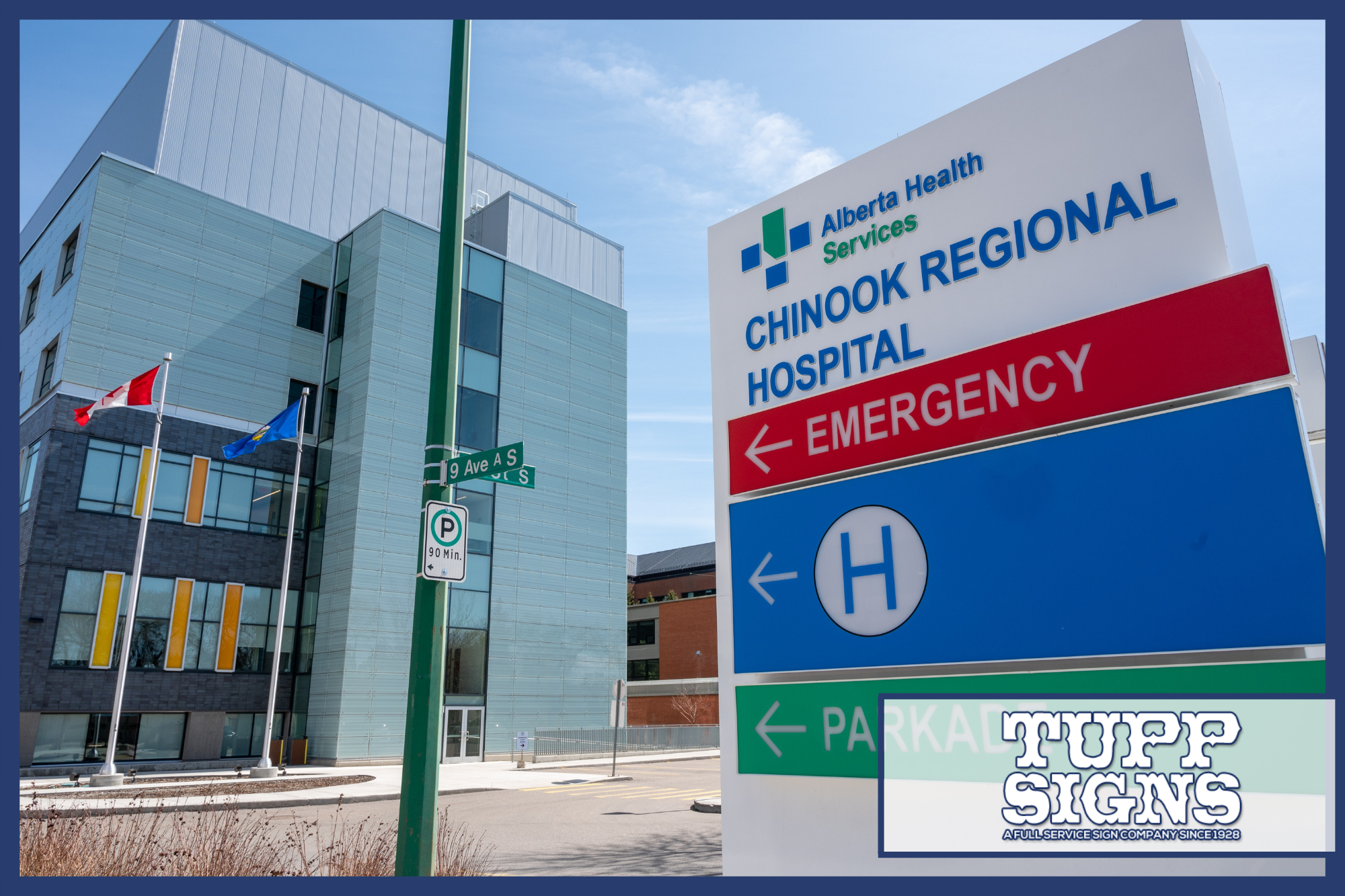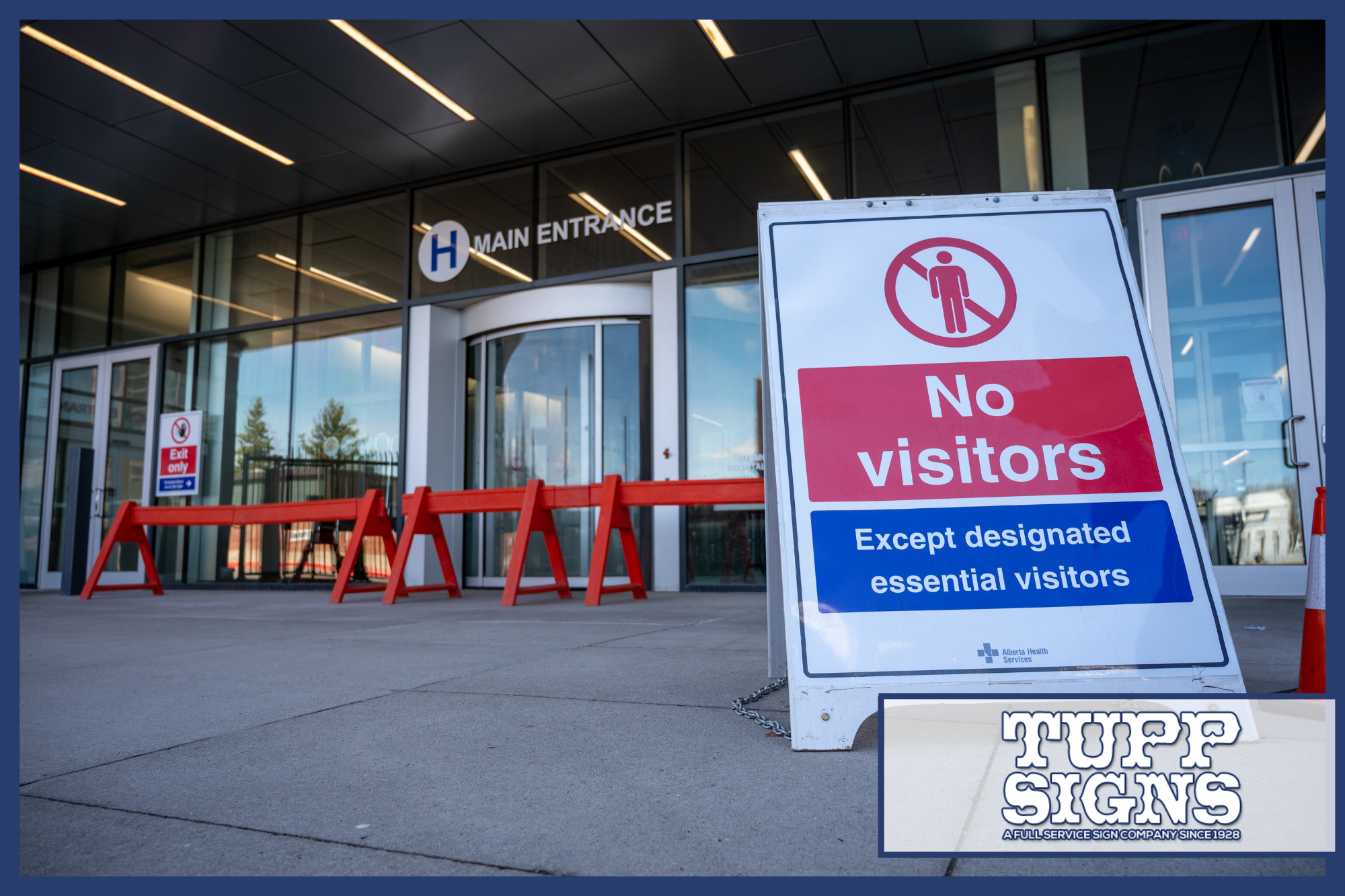Healthcare facilities are sprawling, maze-like, and oftentimes, hectic. Just entering a medical building can be stressful for patients and employees. Although staff can get accustomed to the sterile atmosphere of a hospital, there are people who will be looking for signs. Medical facilities can benefit greatly from business signage, especially when people need to find their way and glean information.
We are going to explain several reasons why healthcare signage is an important feature in medical facilities today. Let’s get started.
Send the Right Message
Any kind of business sign is designed to let people know something crucial, whether that is operating hours or locations, or promotions. For hospitals, stylized signage can be one way to make a great impression on patients and visitors. Having bright, readable signs show that you care about the well-being of individuals in the facility. Such images and signage will set a tone for the quality of care long before the patient or visitor speaks to a staff member.
Including signage in the interior design of a hospital is the first step in enhancing the overall patient experience.
Makes Children and Patients Less Anxious
Hospitals are scary places to be, especially for children and the elderly. The machines and instruments and empty walls can be unsettling. An anxious patient, regardless of their age, is going to be much harder to treat and will have more difficulties during recovery than someone who is relaxed.
That is why children’s hospitals and recovery wings often utilize bright, cheerful signage that puts people at ease. Some examples include fun graphics above machines, like rainbows or well-known cartoon characters above an x-ray or MRI. Some signs may even make medical procedures more understandable, thereby taking the fear out of the scenario. For example, you can use digital signage to highlight wait times or explain procedures while patients await their turn. Or you can use signage to discuss vaccines in a more approachable manner.
Improves Communications
Internal communication is the lifeblood of any hospital. If the staff can communicate with greater ease, the quality of care for the patients will increase. Use signage to inform staff about events, changes to the schedule, and other announcements. Furthermore, signage can be used to remind employees and visitors to wash their hands or wear PPE and so on.
Digital signage can be used to show how many people are currently waiting or which patient to assist next. You can even use the navigation to help new recruits find their way around the hospital.
Accessibility
The Americans with Disabilities Act (ADA) requires businesses and organizations like hospitals to use signage in an accessible manner. This means that disabled restrooms need to be properly designated. Other types of signage, such as wayfinding signs, should also have braille for the visually impaired.
Navigation
As mentioned earlier, hospitals often have confusing layouts. Digital signage is becoming popular in hospitals to help people navigate. Appropriately navigational signage can assist people with getting from one end of the building to another; diagrams in elevators can point people to specific rooms in a wing or the cafeteria or waiting area.
Emergency Guidance
Another type of healthcare signage is of the emergency variety. Just like any kind of business or organization, a hospital can be the site of danger. That is why it is important to have clear signage throughout the facilities. Properly placed signage can help guide individuals to safety during an emergency.
Emergency signage includes placards placed next to dangerous equipment or near stores of chemicals or used sharps that have been discarded. Signs displaying warnings about radiation or the need for appropriate equipment can be hanged near testing rooms. The most important kind of emergency signage for a hospital, however, would be the ones guiding staff, patients, and visitors to the nearest exit.
 Healthcare Signage Options
Healthcare Signage Options
Now that you know the importance of healthcare signage, let’s briefly discuss some ways you can use various sign types to enhance medical facilities.
- Digital signage: You can use LED signage and electronic message centers to provide further details, such as wait times, dates for clinics, interactive boards with directories of numbers or navigation, and broadcasting alerts and emergency information.
- Outdoor signs and banners: Use these to tell visitors about drop-offs or guide guests to the appropriate parking spot or emergency entrance. This can help minimize congestion in the parking lots and mitigate confusion.
- Window graphics and wall murals: Blank walls can be distracting and unsettling. Use window graphics and wall murals to add pops of color and scenery, brightening up the space and making it look much less cold.
Wrapping Up
Hospitals, much like businesses, have signage strategies that are proven effective for reducing stress and making the buildings more accessible. That is why it is important to have fully up to date signage that is ADA compliant, attention-grabbing, and legible. You should also consider where the signage is located and the themes that are displayed. A broad range of individuals visit hospitals, and so the colors, pictures, and locations must meet the needs of everyone.
Tupp Signs understands that places like hospitals require specialized signage that can optimize a patient or visitor’s experience. We have plenty of signage options for every situation and location. Why not give us a call or fill out the contact form to learn more? Our friendly team will happily answer your questions.



